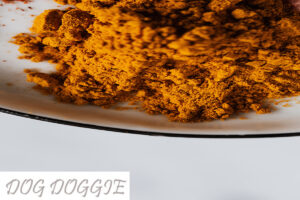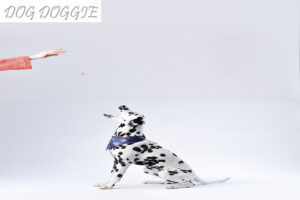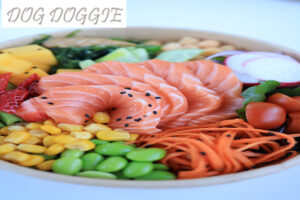How much food should a dog eat a day? It’s the question on every dog owner’s mind, but it cannot be easy to answer. Different dogs have different metabolisms, and all dogs are different sizes and ages, so there’s no one-size-fits-all answer to how many calories your or how much food should a dog eat a day. The size of it, age, and breed of your dog can all affect what she needs, but there are certain general rules you can follow to establish what she specifically needs.
Feeding dogs the recommended amount of high-quality dog food is one of the best methods to ensure their continued good health. When it comes to your dog’s health, you don’t want to compromise on food or overfeed it.
Learn why it’s important and what you can do to figure out how much to feed your dog.
Let’s find out below.
How to Choose the Appropriate Dog Food Amount for Your Dog
The food a dog should consume daily depends on several factors. Calculating your dog’s daily caloric needs based on size, age, and breed is the best place to start. Then you can determine the right amount of food to feed him by ensuring he eats one cup of dry food per 20 pounds of body weight per day. For example, if he weighs 55 pounds, then 55 divided by 20 equals 2.75 cups of dry food (dry measure) each day. If you feed canned food instead, give 1/4 cup per 10 pounds of body weight daily. For this example, that would be 5/4 cups of canned food daily.
Adjusting the Amount, Your Dog Eats Per Day
It is important to make sure you don’t overfeed your dog. Feeding the right amount of food based on size and age can help prevent obesity, which is more common in dogs than humans. As with people, these guidelines will vary depending on your dog’s age and breed. Ask your veterinarian if you have any concerns or are confused about how much food should a dog eat a day.
- For puppies up to 18 months old: 3-5 cups of dry dog food daily. Limit treats to 10% of their daily caloric intake
- For adult dogs 18 months of age or older:
- 4 cups of dry dog food each day. Limit treats to 20% of their daily caloric intake. A good rule of thumb is one treat per 10 pounds that your dog weighs.
Why the Correct Dog Food Amount Is Important
Not providing enough food for your dog can lead to health problems.
However, overfeeding your dog will lead to obesity and the health problems that come with it, such as:
- Conditions affecting the musculoskeletal system include osteoarthritis, torn cruciate ligaments, and degenerative disc disease in the spine.
- Heart failure with congestion
- The air is difficult to take in
- Disorders of the pituitary gland (Cushing’s)
- Diseases of the skin
- Certain cancers
- Lessening of longevity
- life quality decline
You can improve your dog’s general health and keep it feeling great by feeding it high-quality dog food in the recommended amounts.
How much food should a dog eat a day?
We’re going to look at three of the most common ways to feed your dog and compare and contrast the pros and cons of each.
Free-feeding
Some mature dogs may be able to judge whether they’ve had enough food based on their personalities. As long as these “eat to live” breeds get enough exercise, their owners usually don’t have much trouble keeping their dogs at a healthy weight. In this situation, you would set out food during the day and let the dog pick how much it wants.
Although free-feeding doesn’t work for most dogs, it is undoubtedly the simplest way to feed your dog.
Most dogs become overweight from free-feeding, and it might be difficult to later move the dog to scheduled meals if necessary for a medical condition like diabetes.
Scheduled feeding
Those who have the “live to eat” variety of canines need to teach their pets portion control. Scheduled feeding is the best solution for healthy adult dogs.
Here we provide the following guidelines for maintaining a regular feeding schedule:
- You must provide two meals a day at a minimum.
- Maintain a regular feeding schedule.
- Don’t interrupt your dog while his eating for at least 30 minutes.
- Gather up the leftovers.
Some medical disorders, such as bilious vomiting syndrome, require feeding your dog at periodic intervals.
Dr. Simon advises that “these dogs are prone to nausea and vomiting when not fed frequently enough.” The ideal way to feed these dogs is on a regular schedule, which typically involves many meals daily.
Having only one meal a day
Various people have differing views on this approach. I suppose it’s fine to feed people once a day if they have to, but twice a day is much healthier for pets. Is it possible to imagine only having one meal a day? Anxiety and overeating are possible side effects for pets.
While most dog owners will continue to feed their dogs twice daily, there is significant evidence that some dogs may benefit from only eating one meal per day.
According to a recent study, feeding our dogs once a day may benefit them and even lengthen their lives. Compared to dogs that were fed twice a day, these dogs had less problems with their stomachs and joints.
The study can’t declare that eating once a day is preferable, but it does provide a logical link between the two. The study’s authors readily admit that more research is required. Before making any dietary changes, discuss with your vet.
Monitor Your Dog’s Weight
Keep a record of your dog’s weight every two to four weeks. Your dog’s weight gain or loss may indicate that your dog’s food portions need to be adjusted. Talking to your vet about sudden changes in your pet’s behavior will help find out if there are any serious health problems.
You Should Always Consult Your Vet
Consult your vet if you are worried about your dog’s health or diet. You can get advice on how much food to give your dog based on its needs.
Read More:
Why Do Dogs Like Squeaky Toys











